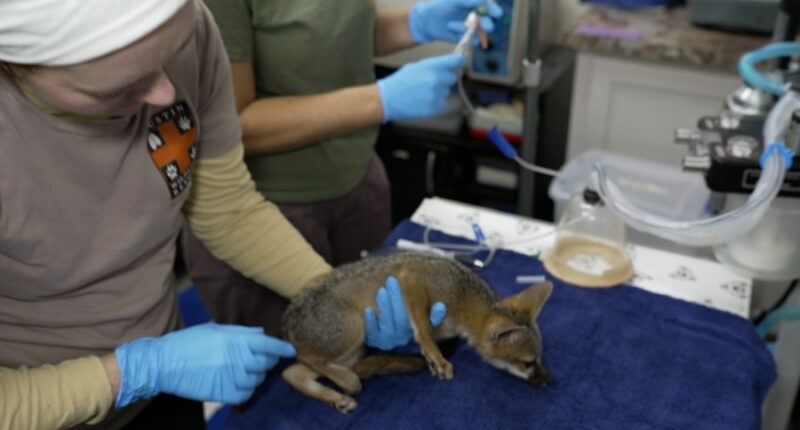Share this @internewscast.com
AUSTIN (KXAN) – As Central Texas grappled with historic flooding over the Independence Day weekend, animal shelters discovered that rain wasn’t the only challenge, but also supporting the animals the storm displaced.
Austin Wildlife Rescue has taken in over 200 wild animals in the days following the Independence Day floods, bringing the total close to 2,500 animals currently on their premise.
This is double what the organization, which spans across 40 Texas counties, typically takes in per day.
Jules Maron, Austin Wildlife Rescue’s executive director, said it’s a common misconception for people to believe that wildlife can handle anything because they are ‘wild.’
“When natural disaster or severe weather happens, it’s not normal,” Maron said. “People kind of focus on the ‘natural’ part of that, versus the disaster part that nobody is equipped to handle.”

When intense rain downpours into the homes of wildlife, the flooding causes the animals to escape in any way they can. Animals get hit by cars more often because they’re trying to escape their overflown nests, dens and dwellings, Maron said.
The most common animals that room and board at Austin Wildlife Rescue are songbirds. Raccoons and opossums follow right after.
Maron said that pediatric animals are frequent guests because they can’t warm themselves up when they are drenched in water, unlike adult animals that can regulate their body temperatures.
Austin Wildlife Rescue housed about 160 animals after the microburst in May.
Despite providing housing and food for thousands of wildlife, Maron said they don’t turn any away.
“I never like to say that we’re at capacity, because we will not turn wildlife away,” Maron said. “We have dedicated staff that [are] here to take care of them no matter what. We’ll be able to make some makeshift caging and habitats on our porch.”
As the Central Texas community continues to unite together, Austin Wildlife Rescue grows steadfast in their mission.
“Everything we do is to release this wildlife back into its native Texas environment,” Maron said.
The rescue service releases animals at authorized sites that are at least 50 acres and host a permanent source of water. Because there is potential for current release sites to be destroyed from the flooding, Maron said they are always looking for more landowners to register.
If wildlife is found, Maron encourages the public to call Austin Wildlife Rescue so they can assess the situation.
“Not every animal needs to come to us,” she said. “We’re happy to talk people through any situation that they’re running into with any wildlife they may be encountering.”
Maron said Austin Wildlife Rescue can’t take all the credit.
“It’s really [the public] taking the time and the compassion to bring these animals to us that need help,” she said. “Nobody wants to see something suffer.”
If interested in donating, Austin Wildlife Rescue accepts monetary donations, as well as purchases from their Amazon wishlist.
Texas animal shelters rally to help each other
The Williamson County Regional Animal Shelter sprung into action over the weekend when flood-prone animal shelters were ordered to evacuate.
They took in every animal from Georgetown Animal Shelter on Saturday, said April Peiffer, Williamson County Animal Shelter’s community engagement coordinator. On Monday, they repeated the process for Lampasas Animal Shelter when it also had to be evacuated.
Since Sunday, nine pets have been returned to their families, according to Peiffer.
“We basically do everything we can to make a reunion happen,” she said. “For pets found in the Georgetown, Leander or Liberty Hill jurisdictions, we are extending our hold times to help those families be able to reunite.”
Austin Pets Alive! has also joined the effort.
This morning, around 130 dogs and cats were boarded onto a rescue flight to partnering shelters in Fort Worth and Utah. The purpose is to make room in overwhelmed Central Texas shelters as the number grows for lost and displaced pets.
The goal remains the same: reunite.
“We know it might take days, weeks for reunifications to happen, but that’s our top priority,” said Clare Callison, the senior director of operations at Austin Pets Alive! “It’s devastating if they go missing, even for a few hours. So I couldn’t imagine losing your home, losing family members, loved ones, but also losing your pets, your family members as well.”













